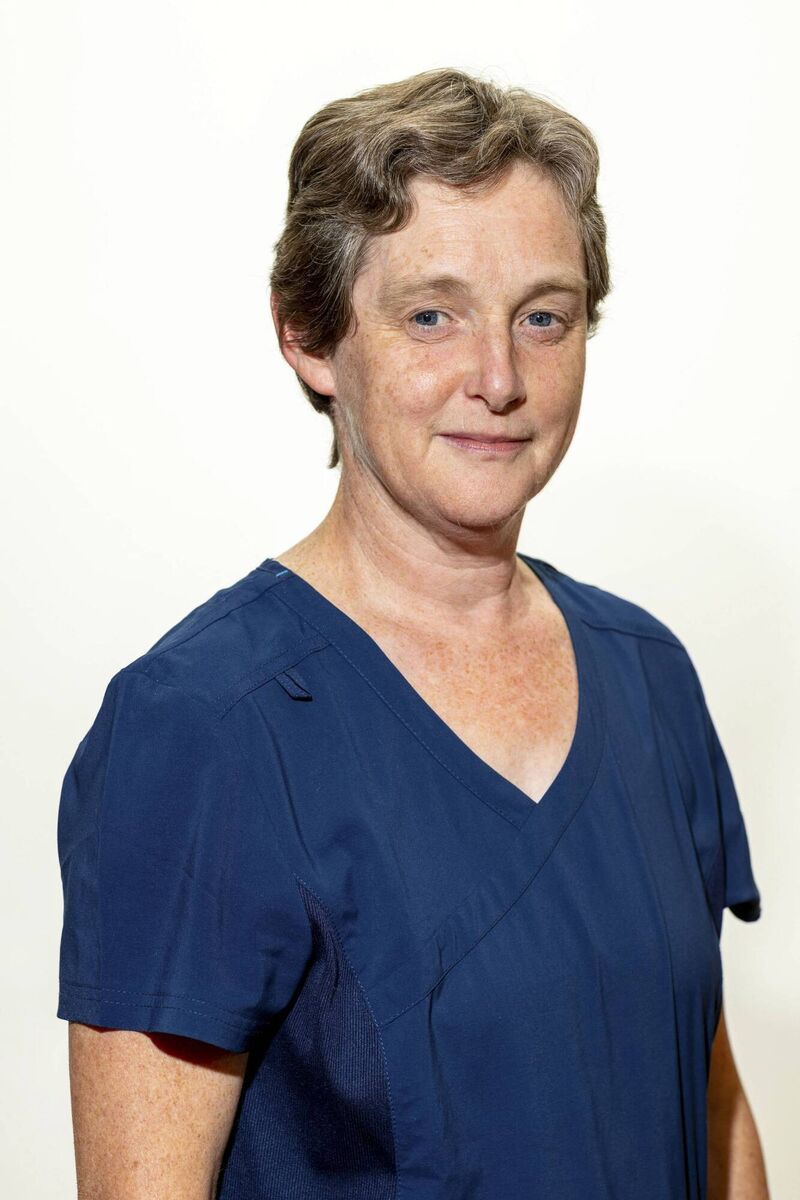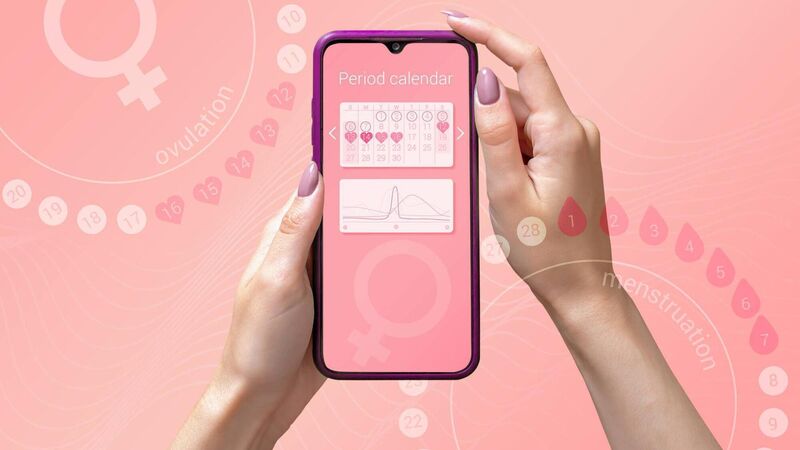“It’s through social media that I started seeing all these influencers switching from hormonal contraception like the pill to fertility tracker apps. They made the ‘natural period’ look glamorous,” says Rachel Moore, a 28-year-old PE teacher from Waterford.
Just last year, Moore, who had been taking oral contraception since the age of about 17 or 18, decided to switch from the contraceptive pill to condoms. She says she felt motivated by “whispers” within her friendship group of a collective shift away from hormonal contraception towards a “more natural, empowering” approach.

“I felt jealous because they were talking about naturally tracking their cycles,” she admits. “In the back of my mind, I had a fear of what these hormones were doing to me. There was also a point when I wanted to figure out whether [my cycle] was normal, in case I wanted to have kids in the future.”
While social pressures can play a significant role, Moore suspects that such pressures are often generated by social media messaging. On TikTok and Instagram, the use of non-hormonal contraceptive methods is often associated with a “more natural” lifestyle and improvements in mental health.

Based on a recent content analysis of 50 YouTube vlogs from the years 2019 to 2021 by University of Delaware researcher Emily Pfender, discontinuation of hormonal birth control has become a common trend among lifestyle and fitness social media influencers.
“In the case of YouTube, the majority of influencers did not mention opting for an alternative birth control method after giving up their hormonal contraception,” Pfender says. “Only 20% of influencers reported switching from a hormonal to a non-hormonal contraceptive method, typically the use of condoms or fertility tracker apps like Daysy or Natural Cycles.”
In a follow-up TikTok study, currently undergoing peer review, Pfender identified 57 different reasons for discontinued use of hormonal contraception. Many of these motivators, such as changes in facial shape and a person’s altered perception of their partner’s physical attractiveness, appear to lack scientific support.
Hormone levels
Birth control options have diversified for women since the contraceptive pill was first legalised under the 1979 Family Planning Act. In September 2022, contraception became freely accessible to women aged 17 to 25 through a new Government scheme, expanded to include women under 30 earlier this year.
In addition to the pill and barrier methods, the scheme covers long-acting reversible contraceptives (LARCs) — a family of safe, long-lasting, and easily removable birth control that includes implants and intrauterine devices (IUDs).
Hormonal implants are small plastic devices that release a synthetic form of progesterone to block ovulation, and are inserted under the skin of the upper arm. IUDs, small T-shaped devices available in hormonal and non-hormonal forms, are inserted into the uterus through a quick procedure. LARCs are generally effective for between three and 10 years, depending on the type.
Both hormonal IUDs and non-hormonal copper IUDs are significantly more effective than the contraceptive pill, which, largely due to inconsistent use, has a 9% failure rate. According to Dr Shirley McQuade, medical director of Dublin Well Woman Centre, IUDs deliver lower doses of synthetic hormones directly to the uterus. As a result, they tend to elicit fewer side effects than the contraceptive pill, which acts systemically.
Hormone levels in the Enovid 10, the first marketed combined pill, were dramatically higher than today’s formulations, with 9.85 mg of progestin and 150 g of estrogen compared to 0.1-3.0 mg of modern progestins and 20-50 g of estrogens. This resulted in significant adverse side effects which, more than half a century later, remain a challenge even at lower doses.
Among the most frequently reported side effects today is a decline in mental health. A recent study published in the journal Epidemiology and Psychiatric Sciences, involving 264,557 people in Britain, revealed that first-time pill users experienced an 80% increased risk of being diagnosed with depression within the first two years, compared to those who have never used oral contraceptives. This increased risk soared to 95% for women under 20.

Aisling Joyce, a 25-year-old volunteer support officer for Community Games living in Mayo, made a similar decision after being prescribed oral contraception at 19.
“I had all the classic side effects of weight gain and mood swings. It just really did not suit me. Initially, I convinced myself to stay on it because I thought it was the right thing to do.”
Abandoning the pill after 18 months, she says that it took between six and nine months for her to “feel normal again”.
Upon entering into a new relationship, however, Joyce opted for a different type and dose of oral contraceptive for three months, only to face the same adverse effects.
In the end, she made the switch to a Nexplanon implant, a tiny progestin-releasing device inserted under the skin of her upper arm. This implant offers up to three years of pregnancy protection.
The contraceptive pill remains highly effective for some women. Since being diagnosed with polycystic ovary syndrome (PCOS), Moore has returned to hormonal contraception, finding relief in Yasmin — a combined pill that helps alleviate her symptoms.
“Women who get recurring ovarian cysts are often advised to use the pill since blocking ovulation can potentially suppress the formation of more cysts,” McQuade explains.
“For other women, the pill can help to stabilise erratic menstrual cycles and control heavy painful periods. It’s important to remember that there can be good medical reasons for going on the pill that extend beyond its purely contraceptive function.”

Increase in choosing LARCs
McQuade says since the introduction of the Government’s free contraception scheme, the number of women under 30 choosing LARCs has “spiralled” in recent years. Just last year, the not-for-profit organisation’s three Dublin-based clinics fitted 1,800 IUDs and implants, a figure that has already increased by 42% this year.
The Mirena IUD, a LARC which releases a synthetic form of progesterone, continues to be the preferred contraceptive option at the Dublin Well Woman Centre. This IUD, with a lifespan of up to eight years, is especially favoured among older women due to its ability to control heavier periods and serve as the hormonal component of hormone replacement therapy (HRT).
With the cost of the initial consultation, fitting, and removal of LARCs covered by the government’s scheme, the popularity of non-hormonal copper IUDs is not far behind the Mirena.
According to McQuade, younger women with lighter periods are increasingly opting for the “copper coil”, which is the most effective non-hormonal contraceptive available. Compared to the Mirena with an annual failure rate of 0.2% the copper IUD lasts for between five and 10 years and has a 0.8% annual failure rate.
“We’ve seen women in their late 20s, who’ve been on the pill for years, stop taking it because they want to have some idea of their natural cycle and fertility,” McQuade says.
“They might not want to get pregnant just yet, but they want to know that they have a regular cycle for when they do want to get pregnant.”

Another likely motivator of discontinuation is cost. While the up-front cost of LARCs can be prohibitive for those who are not eligible for the government’s free contraceptive scheme, Dr Caitríona Henchion argues that the pill is “the most expensive contraceptive option” in the long term.
“A year’s use of the pill, including two GP visits, can cost €191,” says Henchion, medical director of the Irish Family Planning Association. “The annual cost of contraceptive coils [IUDs] and implants, averaged over five years, ranges from €49 to €150 per year and is lower than any of the shorter-term contraceptive options or the injection.”
Social media messaging often fails to communicate the intricacies of contraceptive choice and typically overlooks the increased risk of pregnancy associated with discontinuing hormonal contraception.
“None of the YouTube influencers [from the study] discussed the risks of unplanned pregnancy, although about 64% of them mentioned the fact that they were currently in a stable relationship or marriage,” says Pfender.
Natural family planning methods typically involve estimating ovulation windows based on basal body temperature or the viscosity of cervical fluid.
According to Henchion, opting for fertility tracking apps as an alternative to hormonal contraception or copper IUDs carries a significantly higher risk of unintended pregnancy, and should be reserved for situations in which “pregnancy would not cause a crisis in someone’s life”.
She says: “We have seen women presenting for abortion care with the Irish Family Planning Association who have avoided using contraception based on unfounded fears about hormones and lack of understanding of the risk of failure with fertility apps from social media.
“Influencers should be clear when recounting their personal experiences that fertility is complex, and while the apps’ predictions might work for one person, these apps won’t suit everyone.”

Unlimited access. Half the price.
Try unlimited access from only €1.50 a week
Already a subscriber? Sign in
CONNECT WITH US TODAY
Be the first to know the latest news and updates

Celebrating 25 years of health and wellbeing











